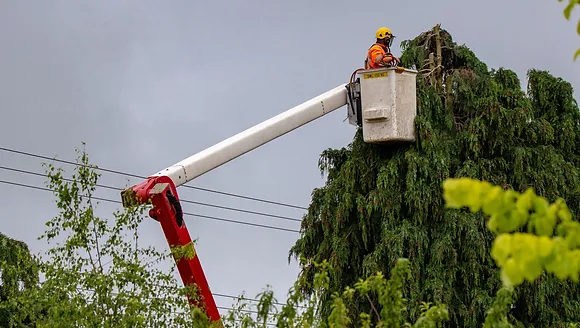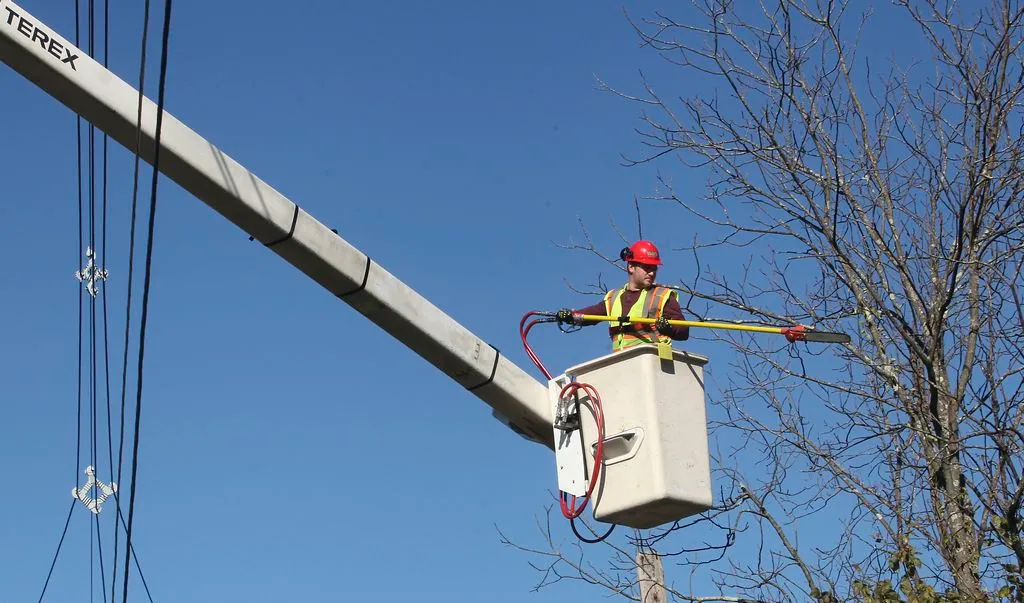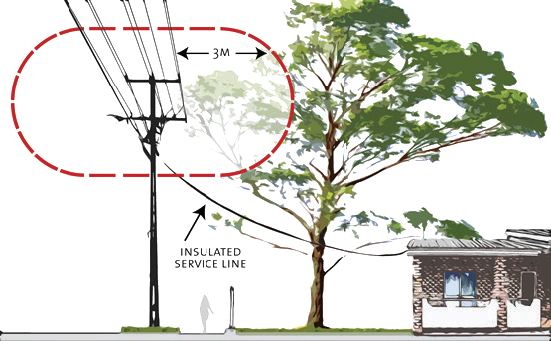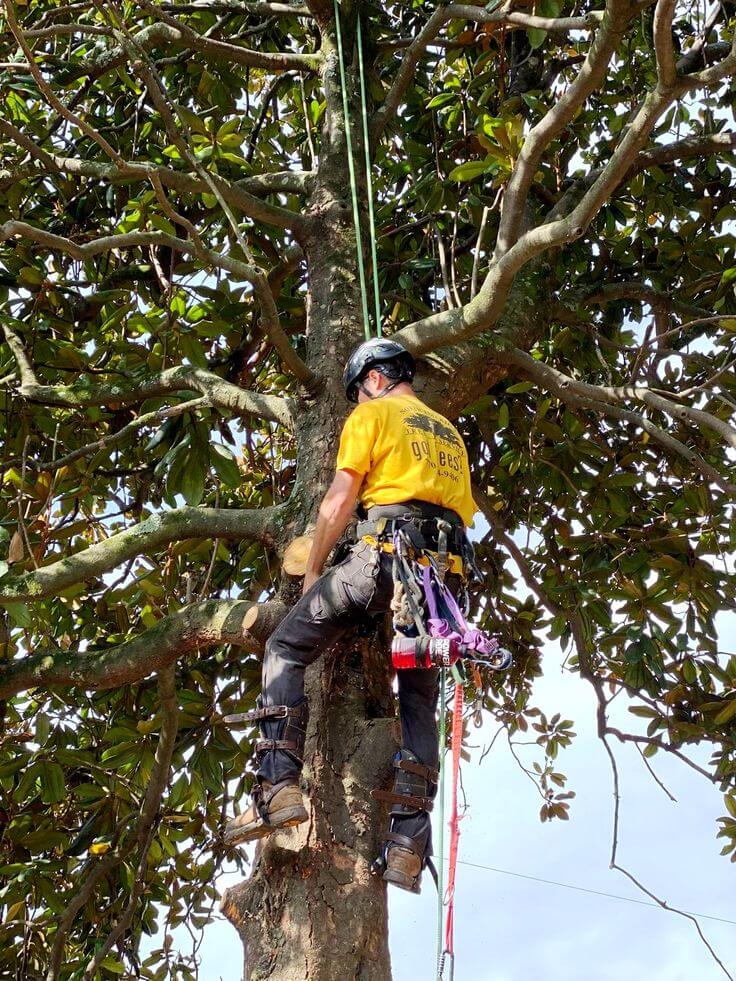Tree Removal Near Power Lines
Introduction
Trees are beautiful and essential to our environment, but when they grow near power lines, they can become a significant hazard. The importance of tree removal near power lines cannot be overstated, as it is crucial for ensuring safety and preventing potential disruptions. Let’s dive into why this practice is so vital, the risks involved, and how to go about it safely.
Why Tree Removal Near Power Lines is Crucial
Safety Concerns for Homeowners
When trees grow too close to power lines, they pose a serious safety risk. Overgrown branches can come into contact with live electrical wires, leading to potential fires, electrical shocks, or even electrocution. The safety of everyone in the vicinity, including homeowners and utility workers, can be jeopardized by trees that are too close to power lines.

Potential Power Outages and Service Disruptions
Power lines can be disrupted by trees, leading to extensive power outages. This is particularly concerning during storms when branches are more likely to break and fall onto the lines. These disruptions can leave neighborhoods without power for hours or even days, causing significant inconvenience and sometimes costly damages.
Legal Implications and Responsibilities
Homeowners are often responsible for ensuring that trees on their property do not interfere with power lines. Failure to do so can result in legal consequences, especially if the negligence leads to accidents or service disruptions. Understanding your responsibilities and taking proactive measures can help avoid legal complications.
Common Risks of Overgrown Trees Near Power Lines
Fire Hazards
One of the most dangerous risks of trees near power lines is the potential for fires. Dry branches can easily ignite if they come into contact with a live wire, especially in areas prone to dry weather conditions. These fires can spread quickly, posing a threat to homes and lives.
Electrical Shocks and Electrocution Risks
Overgrown trees can become conductors of electricity if they touch power lines, leading to dangerous situations where people could be shocked or electrocuted. This risk is heightened during wet conditions when the likelihood of electricity conducting through the tree increases.
Property Damage During Storms
During storms, the risk of trees falling onto power lines and causing significant property damage increases. Heavy winds can break branches or uproot trees entirely, leading to potentially costly damages to homes, vehicles, and other structures.
Understanding Utility Company Regulations
What Are the Standard Guidelines?
Utility companies have strict regulations in place to manage tree growth near power lines. These guidelines typically include maintaining a specific distance between trees and power lines to prevent any interference. Homeowners should familiarize themselves with these guidelines to ensure compliance.
How Do Utility Companies Manage Tree Growth Near Power Lines?
Most utility companies conduct regular inspections and maintenance to manage tree growth near power lines. This may involve trimming branches or removing trees that pose a threat. In some cases, they may notify homeowners of necessary actions, but it’s important for property owners to be proactive as well.
Seasonal Considerations for Tree Trimming
Tree growth varies with the seasons, and the best time for trimming or removal is typically during the dormant season (late fall to early spring). During this time, trees are less likely to grow rapidly, and the risk of disease spread is minimized.
When to Hire a Professional
Hiring a professional tree removal service is the safest option, especially when dealing with trees near power lines. Professionals are trained to handle the complexities of removal, ensuring that the job is done safely and efficiently.
Questions to Ask Potential Tree Removal Companies
Before hiring a tree removal service, ask about their safety protocols, experience with power line proximity, and whether they handle the necessary permits. Additionally, inquire about their equipment and methods for ensuring the job is done without causing damage to your property.
The Process of Safe Tree Removal
Step-by-Step Breakdown of the Tree Removal Process
Assessment – The tree removal team assesses the situation, identifying risks and determining the best approach.
Preparation – Safety measures are put in place, including securing the area and planning the tree’s fall direction.
Cutting – The tree is cut in sections, starting with the branches and moving to the trunk.
Removal – The tree is safely lowered to the ground, cut into manageable pieces, and removed from the site.
Cleanup – The area is cleared of debris, and the site is restored to its original condition.
Safety Measures During Removal
Safety measures include wearing protective gear, using the right equipment, and ensuring that power lines are de-energized or that proper clearance is maintained throughout the process.
Cost of Tree Removal Near Power Lines
Factors Influencing the Cost
The cost of tree removal varies based on the tree’s size, location, and proximity to power lines.
Preventative Measures for the Future
Regular Maintenance Tips
Regularly inspect and trim trees on your property to prevent them from becoming a hazard. Addressing problems early can prevent larger issues in the future.
Choosing the Right Trees to Plant Near Power Lines
If you’re planting new trees, choose species that grow slowly and don’t reach heights that would interfere with power lines. Consult with local experts or your utility company for recommendations.

Insurance Coverage for Tree-Related Incidents
Check with your insurance provider to see if your policy covers tree removal, especially in cases where trees pose a risk to power lines. This coverage can help mitigate costs if removal becomes necessary.
Environmental Considerations
Impact of Tree Removal on the Environment
Tree removal can impact local ecosystems, especially if done on a large scale. Consider the environmental effects and explore alternatives like tree trimming or relocating the tree if possible.

